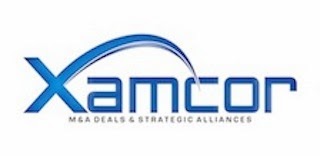We had heard rumors that Lexmark executives have been saying that they will not be outbid for ReadSoft, but Hyland Software sure is trying. Yesterday, the Cleveland-based ECM ISV attempted to trump Lexmark's offer for the Swedish capture vendor for a third time. This time,
Hyland topped Lexmark's bid by 10%, offering the equivalent of $246M for ReadSoft. This was significant because it showed that Hyland was once again willing to play by Lexmark's rules.
If you remember,
Hyland's previous bid offered only a 4.7% premium over Lexmark's previous bid - even though ReadSoft's board had stipulated that it would only consider other bids if they were at least 7% higher than Lexmark's previous bid. Hyland felt they had worked around this stipulation by acquiring an 11% stake in ReadSoft, which meant that another provision of the Lexmark bid (that it acquire at least 90% of the outstanding shares) could not be met.
Lexmark countered by topping Hyland's offer (and allowing for the 90% provision to be waved).
Well, Hyland was quiet for awhile and it seemed like the matter was done - even though I have always been of the opinion that ReadSoft would provide a bigger strategic boost for Hyland than it would for Lexmark. After all, Lexmark already has the Brainware product line that clearly competes with ReadSoft in the invoice capture space. Yes, Hyland has AnyDoc, but from my perspective, Lexmark has invested a lot more in Brainware (including a much higher acquisition price) than Hyland has in AnyDoc. There are other reasons as well.
(Here are some of Hyland's reasons why they think ReadSoft is a good fit.)
But, on the other side, Lexmark is a profitable multi-billion dollar company that has deeper pockets than Hyland-which does a few hundred million in annual revenue. And leveraging those resources,
Lexmark has quickly countered Hyland's latest bid, if only by less than 1%. The bottom line is that ReadSoft's actions, if not their words (well maybe some of their words too) have made it clear that they would prefer to be acquired by Lexmark, but you have to give Hyland credit for their continued efforts. Plus, they have helped drive up the price of ReadSoft to a much more respectable 2.1x revenue than Lexmark's initial bid, which was worth slightly more than 1.5x ReadSoft's 2013 revenue of $117M.
And it's my opinion that Hyland is not done yet. They've known they were behind the 8-ball from the beginning and yet continue to put effort into making bids. Maybe they are just trying to drive up the price to weaken their competitor - Lexmark's Perceptive Software. But, then again, maybe they have some legal action plan, because it doesn't really seem fair that Hyland has to make a bid at least 7% higher for ReadSoft's board to consider it, and then Lexmark's can just come in with a nominal raise on Hyland's bid and have the ReadSoft board automatically give its blessing. But then again this isn't poker, which apparently has more rules than the M&A game. Anyhow, it's my opinion that Hyland may have an ace up its sleeve, that it is waiting to play.



